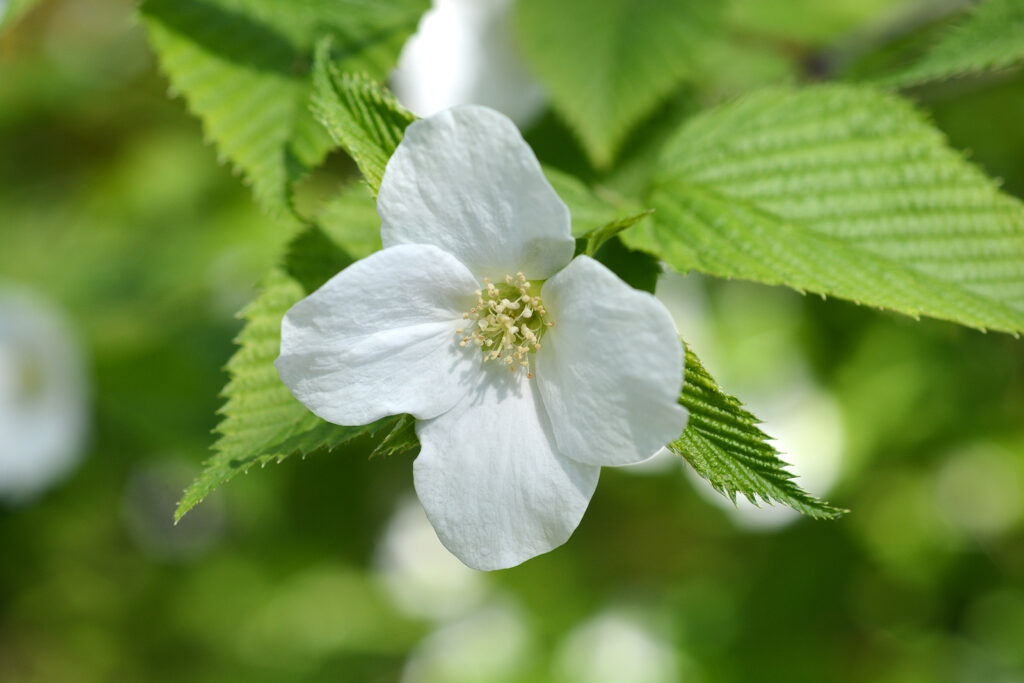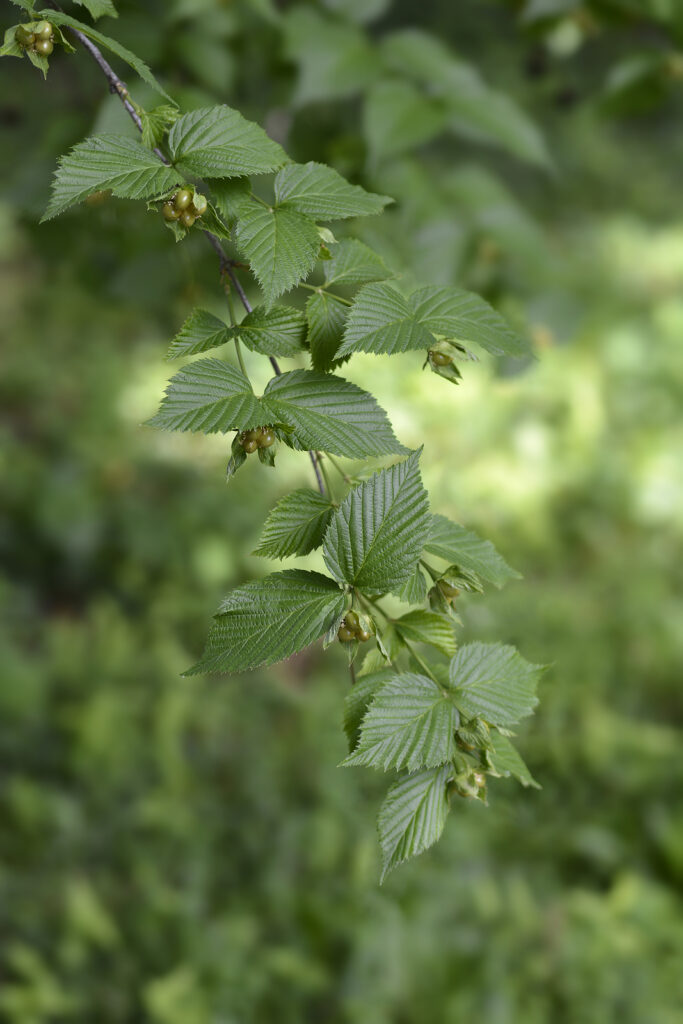Rhodotypos–commonly called jetbead or black jet bead–is a deciduous shrub that grows rounded and arching. It bears large, papery, four-petaled flowers from spring to summer. In autumn the flowers give way to shiny black berries. The persistent black berries give Rhodotypos its common name jetbead.
Rhodotypos is easy to grow and is well suited for urban gardens. It can tolerate all soil types, sun or shade, pollution, and stressful situations. Use Rhodotypos in borders or mass shrub plantings or in shady situations.
Rhodotypos is a single species genus. It is native to woods and scrublands in Japan and China.

Get to know Rhodotypos
- Plant type: Deciduous shrub
- Growing zones and range: Zones 5 to 8
- Hardiness: Hardy to Zone 5
- Height and width: 3-5 feet (.9-1.5m) tall
- Foliage: 2-3 inch light green leaves remain on the shrub until late into fall; arching branches bend close to the ground
- Flowers: four petaled, 1-2 inch (2.5-5.1cm) blossoms
- Seeds: Clusters of shiny black .3 inch (.8cm) seeds that cling to the plants throughout winter.
- Fruits: Persistent shiny black fruits
- Bloom time: late spring—until midsummer
- Uses: Front of the border, massed in shade
- Common name: Jetbead
- Botanical name: Rhodotypos
- Family name: Rosaceae
- Origin: Japan and China
Where to plant Rhodotypos
- Plant Rhodotypos in full sun or light shade.
- Rhodotypos can endure a wide variety of soils, but it does best in one well supplemented with peat moss or leaf mold.
- Rhodotypos tolerates less than ideal circumstances of urban life; it tolerates pollution and other stressful situations.
When to plant Rhodotypos
- Set Rhdotypos in the garden in spring or autumn.
Planting and spacing Rhodotypos
- Space Rhodotypos 3 to 5 feet (.9-1.5m) tall

How to water and feed Rhodotypos
- Give Rhodotypos regular water.
- Feed Rhodotypos with an all-purpose organic fertilizer in spring.
How to care for Rhodotypos
- Rhodotypos can be left unpruned, but if the bushes become straggly, cut a few of the oldest main stems to the ground each spring.
- Drastic pruning sacrifices some flowers and fruit but encourages the plants to send up many new stems.
- One-third of old growth can be removed in early spring to promote new shoots.
Rhodotypos pests and diseases
- Rhodotypos is infrequently bothered by pests or diseases.
Rhodotypos propagation
- New Rhodotypos plants can be started from cuttings of young growth in late spring or early summer, from semihardwood cuttings of more mature growth in mid- or late summer, or from hardwood cuttings of dormant leafless growth in late fall or winter.
Rhodotypos varieties to grow
- Rhodotypos scandens (also called R. kerrioides), Jetbead, sometimes called white kerria, this shrub grows rounded and slightly arching from 3-6 feet (.9-1.8m) tall and up to 8 feet (2.4m) wide. Leaves up to 4 inches (10.2cm) long are toothed and prominently veined and may be touched with yellow in autumn. The white flowers are 1.5 inches (3.8cm) across, borne in late spring at the ends of branches, and rebloom sporadically. The .5-inch (1.3cm) fruits are hard and beadlike, unusual although not particularly showy. Zones 5 to 8.















